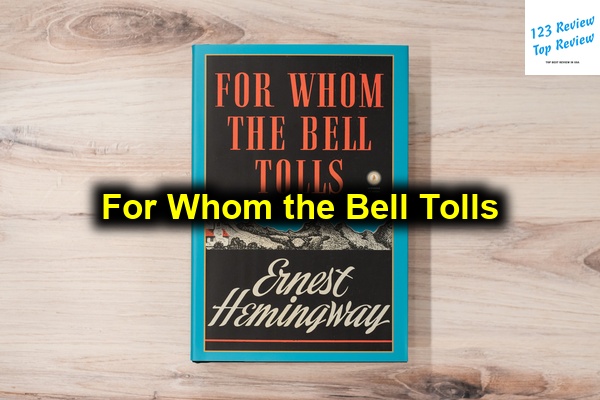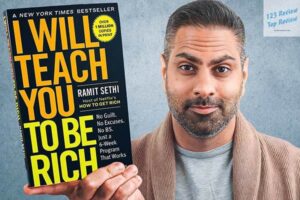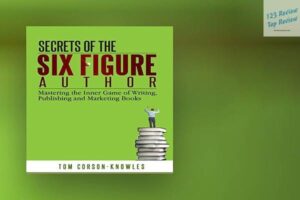Set during the Spanish Civil War, the novel intricately weaves personal narratives with broader political and social themes, creating a timeless commentary on the human experience amidst the harrowing backdrop of conflict.

In this review, 123 Review will delve into the overarching themes of the novel, its critical reception, writing style, historical context, and its adaptations in modern culture.
Analysis of Themes
Sacrifice and Loyalty in War
Central to For Whom the Bell Tolls is the theme of sacrifice, particularly in the context of war. The protagonist, Robert Jordan, is an American dynamiter who fights alongside the loyalist forces opposing the fascists in Spain. Throughout the novel, Jordan grapples with the notion of loyalty—not just to his comrades but also to his ideals and the cause for which he is fighting. The sacrifices made by characters, especially when it comes to life and death, underline the devastating costs of war.
Jordan embodies the struggle between personal desires and the greater good. He is drawn not only to the cause but also to Maria, a young woman traumatized by the war. Their relationship becomes a poignant exploration of love amid conflict, where every moment is overshadowed by the impending violence and death that war entails. The loyalty Jordan feels towards his fellow guerrilla fighters is matched only by the loyalty he wishes to establish with Maria.
Hemingway depicts the sacrifices of war not solely in terms of physical loss but also psychological impacts. Characters like Pablo, the leader of the guerrilla band, illustrate the moral and emotional toll that constant warfare can inflict. Pablo’s initial reluctance to continue fighting emphasizes the conflict between interior fears and exterior demands of loyalty. Through these interactions, Hemingway captures the essence of sacrifice—how it stretches beyond mere duty to encompass love, hope, and the quest for human connection in chaotic times.
The Complexity of Human Relationships
Human relationships in For Whom the Bell Tolls are rendered with a remarkable depth that mirrors the complexities of love and friendship against the backdrop of war. The mutual dependencies and conflicts among the characters reveal multifaceted interactions shaped by shared experiences of trauma, loss, and hope.
Robert Jordan’s relationship with Maria is central to the narrative, symbolizing love’s resilience amidst the destruction of war. Their passionate romance is juxtaposed with the violence surrounding them, illustrating how love can serve both as a sanctuary and a source of pain. Jordan’s protective instincts towards Maria and his desire to create a life together contrast sharply with the reality of their situation, exemplifying the tension between personal longing and the external forces of conflict.
Additionally, Jordan’s bond with his fellow fighters—especially the experienced guerrilla leader, Pablo, and the young and idealistic Andres—dynamic shifts throughout the novel. The group’s varying levels of commitment to the cause reveal conflicting notions of loyalty and the moral ambiguities of warfare. Hemingway explores themes of camaraderie and betrayal, highlighting how these relationships influence individual characters and their choices.
Through the lens of these complex relationships, Hemingway raises questions about the nature of human connection in the face of adversity. The characters often struggle between their ideological commitments and personal bonds, leading to poignant reflections on the cost of loyalty and the fragility of human relationships amid chaos.
The Role of Ideals in Conflict
Ideals play a pivotal role in For Whom the Bell Tolls, presenting a nuanced exploration of the motivations behind warfare and the clash of beliefs. The Spanish Civil War serves as a battleground for differing ideological perspectives, embodied in the characters’ struggles and aspirations.
Robert Jordan is deeply committed to the Republican cause, believing in the fight against fascism as a moral imperative. Throughout the novel, Hemingway emphasizes the sincerity of Jordan’s convictions; however, he also reveals the disillusionment that accompanies fervent idealism. The harsh realities of war challenge Jordan’s beliefs, prompting moments of introspection about the worth and consequences of his actions. As the narrative unfolds, the complexities of his ideals become apparent, with the line between noble sacrifice and senseless loss often blurring.
The character of Pablo embodies a contrasting viewpoint, highlighting the skepticism many individuals feel towards grand ideals and the promises they bring. Initially full of revolutionary passion, Pablo’s discouragement reveals the disillusionment that can emerge from witnessing the brutality of war. His reluctance to engage in combat speaks to a broader critique of ideological fervor, complicating the notion of unwavering loyalty to a cause.
In placing these competing ideals in opposition, Hemingway portrays the multifaceted nature of conflict, underscoring how different perspectives on honor, loyalty, and duty shape the characters’ experiences. Far from a simplistic view of good versus evil, the narrative exposes the moral intricacies inherent in warfare, encouraging readers to question the sacrifices made in the name of ideals.
Critical Reception
Initial Reviews and Public Response
Upon its publication in 1940, For Whom the Bell Tolls received immediate critical acclaim, establishing itself as one of Hemingway’s most important literary works. Critics praised the novel for its emotional depth, vivid prose, and realistic portrayal of war. Many noted that it captured the human experience in a manner that transcended mere historical representation, offering profound insights into human resilience.
The public response was equally enthusiastic, quickly propelling the book to bestseller status. Readers resonated with Jordan’s struggle and his relationship with Maria, finding solace in the portrayal of love as a powerful force amid chaos. The novel’s exploration of sacrifice and loyalty struck a chord during a time when the world faced the specter of World War II, making its themes resonate deeply with contemporary audiences.
However, the novel also faced criticism, particularly from those who believed Hemingway romanticized war. Some scholars pointed out that while the text effectively captured the emotional turmoil of conflict, it could risk glossing over the harsher realities of warfare. Despite these criticisms, most reviewers acknowledged the book’s significant contributions to literature and its relevance to the wartime climate.
Long-term Literary Impact
Over the decades, For Whom the Bell Tolls has solidified its status as one of the great American novels, continuing to spark discussions around themes of conflict, love, and sacrifice. Its influence can be seen in the works of subsequent authors who explore the impacts of war on the human psyche and relationships.
The book’s exploration of complex human relationships and moral ambiguities has made it a seminal text in both literary and critical studies. Its incorporation of idealism within the context of conflict influenced later war literature, prompting generations of writers to reflect on similar themes. As the nature of warfare and its consequences have evolved, Hemingway’s insights remain deeply relevant in discussions surrounding the ethical implications of conflict in modern literature.
Furthermore, For Whom the Bell Tolls played a significant role in establishing Hemingway’s legacy. It exemplifies his unique narrative style, showcasing his ability to blend personal experience with fictional storytelling seamlessly. As a result, the novel remains a focal point for scholars and readers seeking to understand the evolution of modernist literature and the exploration of moral complexity in narrative.
Comparisons with Other Hemingway Works
For Whom the Bell Tolls can be explored in tandem with other major works by Hemingway, drawing essential thematic and stylistic comparisons. Similar to A Farewell to Arms, another of Hemingway’s acclaimed novels, For Whom the Bell Tolls deals with the impact of war on love and personal relationships. Both narratives reveal the complexities of navigating romance amid the chaos of conflict, emphasizing the transitory nature of human connections in crisis.
While A Farewell to Arms is set during World War I, its themes of loss and disillusionment parallel those in For Whom the Bell Tolls. The protagonists in both novels grapple with the devastating consequences of war, often reflecting on the futility of their struggles. Hemingway’s focus on the personal aspects of war—its psychological toll and the indelible scars left on individuals—courses throughout both narratives, revealing the timelessness of his examination of conflict.
Moreover, the novella The Old Man and the Sea highlights Hemingway’s thematic continuities with respect to struggle and perseverance. Though markedly different in context, both works encapsulate the human spirit’s resilience against insurmountable odds. In The Old Man and the Sea, Santiago’s fight against nature echoes the internal and external battles faced by Robert Jordan in For Whom the Bell Tolls, showcasing Hemingway’s literary motif of enduring personal struggles.
Despite varying settings and premises, the echoes of existential inquiry and profound humanity unite these works, emphasizing the universality of themes that permeate Hemingway’s canon. The exploration of courage, loss, and the pursuit of ideals across different conflicts serves to solidify Hemingway’s standing as a writer whose insights transcend time and place, leaving an indelible impact on literature.
Writing Style
Economical Use of Language
Hemingway’s writing style in For Whom the Bell Tolls is characterized by its economy and clarity, hallmark traits of his literary approach. Using concise and straightforward language, Hemingway captures complex emotions and ideas without embellishment, allowing readers to immerse themselves fully in the narrative. This economy of words reflects the stark realities of war, emphasizing both the gravity of the characters’ experiences and the immediacy of their struggles.
Hemingway’s prose often evokes a sense of urgency, propelling the narrative forward while capturing the emotional weight of each moment. Each sentence is carefully crafted, directing focus to the characters’ internal conflicts, their motivations, and the relationships they navigate. This minimalism enhances the impact of the novel, as readers are compelled to grapple with the underlying themes of sacrifice, love, and ideological conflict.
This stylistic choice also complements the novel’s examination of the brutality of war. The starkness of Hemingway’s language mirrors the physical and emotional desolation faced by the characters, reinforcing the notion that brevity can wield immense power in conveying human experience. The absence of excessive description invites readers to visualize and interpret the world through the characters’ eyes, heightening the emotional resonance of their journeys.
Narrative Techniques and Point of View
The narrative structure of For Whom the Bell Tolls employs a third-person limited point of view, primarily centered on Robert Jordan. This technique allows readers to gain insight into Jordan’s thoughts, emotions, and uncertainties while maintaining a certain distance from the other characters. As a result, the narrative intricately reflects Jordan’s internal conflicts, desires, and fears, creating a deeply personal exploration of his experiences in wartime.
Hemingway alternates between focused character perspectives, often shifting between dialogue and action. This approach enables the reader to understand the diverse motivations driving each character while emphasizing the communal aspects of war. The interactions between characters—whether through conversations or internal monologues—highlight their emotional landscapes and relationships, adding layers of complexity to the narrative.
Moreover, Hemingway’s use of flashbacks is notable throughout the novel, providing deeper context to Jordan’s experiences and relationships. This technique allows readers to understand not only the character’s current motivations but also the formative moments that shaped his ideals and aspirations. The integration of past memories enhances the emotional impact of the narrative, illustrating how the trauma of war reverberates through the characters’ lives.
Symbolism and Imagery
For Whom the Bell Tolls is rich with symbolism and imagery that deepen the thematic exploration of the narrative. The titular phrase, referencing John Donne’s meditation on mortality, encapsulates the interconnectedness of human experiences and emphasizes the theme of sacrifice. This symbolic resonance informs the reader that no individual struggle occurs in isolation; rather, it contributes to the shared fabric of humanity.
The landscape of Spain itself serves as a significant symbol in the novel. The rugged terrain reflects the harsh realities of war, creating a stark contrast against the fleeting moments of beauty experienced by the characters. Mountains, valleys, and the natural world act as both settings and symbols, representing the struggles between the ideological forces at play and the personal conflicts faced by the characters.
Additionally, the imagery of bridges and the act of crossing becomes a powerful symbol throughout the narrative. The bridge represents a threshold between life and death, safety and danger, illustrating the transformative journey that characters undertake amid the perils of war. Robert Jordan’s mission to blow up the bridge serves as a metaphor for the broader struggle against oppression and the quest for freedom, encapsulating the ambivalence and moral complexity of warfare.
Hemingway’s use of sensory imagery further enhances the reader’s connection to the narrative. Through vivid descriptions of the natural environment, the characters’ emotions, and the cacophony of battle, readers are drawn into the visceral experiences of the characters. This imagery serves to illustrate the tension between beauty and destruction, evoking the profound complexities of love, loss, and the fleeting moments of joy amidst chaos.
Historical Context
Reflections of the Spanish Civil War
For Whom the Bell Tolls is deeply rooted in the historical context of the Spanish Civil War (1936-1939), a conflict that divided the nation and drew international attention. The war was characterized by the struggle between the Republicans, comprised of a coalition of leftist factions including communists and anarchists, and the Nationalists, led by General Francisco Franco.
Hemingway’s portrayal of the war captures the ideological fervor that underpinned the conflict, highlighting the various motivations that propelled individuals into battle. The novel serves as a reflection of the complexities and moral ambiguities faced by combatants, as well as the broader implications of the conflict for Spain and beyond.
Additionally, Hemingway’s connections to the Spanish Civil War informed his narrative choices. As a journalist during the war, he witnessed firsthand the atrocities committed on both sides. His experiences shaped the characters and events within the novel, lending authenticity to their struggles. Through the lens of fiction, Hemingway sought to convey the emotional truths of those engaged in the conflict, offering a nuanced portrayal of the human experience in wartime.
The novel also reflects the failure of the international community to intervene effectively in the conflict, painting a picture of betrayal and disillusionment. The Spanish Civil War served as a precursor to the larger ideological battles of World War II, and Hemingway’s exploration of these themes highlights the broader implications for humanity as a whole.
The Influence of the Lost Generation
For Whom the Bell Tolls can be situated within the broader literary movement known as the Lost Generation, a term used to describe a group of American expatriates who lived in Europe during the post-World War I era. The disillusionment that characterized this generation is prominently reflected in Hemingway’s exploration of war and its impact on the human spirit.
Ernest Hemingway, along with contemporaries such as F. Scott Fitzgerald and Gertrude Stein, grappled with themes of disillusionment, loss, and the search for meaning in a fragmented post-war world. The characters in For Whom the Bell Tolls embody this sense of dislocation, struggling to find purpose amidst the chaos of conflict. Their confrontations with ideological fervor, moral ambiguity, and personal sacrifice resonate deeply with the sentiments of the Lost Generation.
Moreover, Hemingway’s succinct prose and minimalist style, hallmarks of Lost Generation literature, effectively convey the emotional weight of his characters’ experiences. This stylistic approach serves as a reflection of the era’s existential anxieties, allowing readers to engage directly with the emotional truths found in the narrative.
Political Commentary in the Text
For Whom the Bell Tolls offers a stark political commentary on the realities of war, reflecting the broader ideological conflicts of the time. Hemingway’s depiction of both the Republican and Nationalist factions captures the nuances of the political landscape, revealing the moral complexities of each side in a struggle for power.
Through the characters’ interactions and dialogues, Hemingway explores the repercussions of ideological commitment, the costs of loyalty, and the consequences of human actions in times of conflict. The novel’s exploration of the futility of war resonates deeply with readers, prompting reflections on the human toll of political ideologies and the lengths individuals are willing to go to defend their beliefs.
The text serves as a critique of the romanticism often associated with war, rejecting the glorification of violence while highlighting the reality of personal loss and sacrifice. In portraying the struggles faced by the characters, Hemingway presents a sobering perspective on the absurdity of war and its potential to dehumanize individuals.
Ultimately, For Whom the Bell Tolls stands as a poignant political commentary, urging readers to confront the ethical implications of conflict and consider the broader consequences of ideological battles. Through the lens of war, Hemingway fosters a critical engagement with the moral complexities that shape human experiences—a theme that continues to resonate in contemporary discussions of conflict and its aftermath.
Adaptations and Cultural Influence
Film Adaptations and Their Reception
Over the years, For Whom the Bell Tolls has been adapted into various formats, most notably a 1943 film directed by Sam Wood. Starring Gary Cooper as Robert Jordan and Ingrid Bergman as Maria, the film adaptation sought to capture the essence of Hemingway’s novel while introducing cinematic elements to the story.
The film was generally well received, with Cooper and Bergman’s performances being praised for their emotional depth and chemistry. Despite its critical acclaim, the adaptation faced challenges in conveying the novel’s complexities and themes. The constraints of a typical Hollywood film often diluted the narrative’s exploration of war and ideology, leading to a more romanticized portrayal compared to Hemingway’s original work.
While the film adaptation provided a platform to engage with Hemingway’s narrative, many critics noted its limitations in capturing the depth and nuance of the characters and their relationships. Nonetheless, it brought greater visibility to the novel and introduced a new audience to its themes, further cementing its place in popular culture.
Influence on Later Literature
Hemingway’s For Whom the Bell Tolls continues to exert a profound influence on contemporary literature, inspiring writers to explore similar themes of war, love, and sacrifice. The novel has served as a template for subsequent explorations of conflict and human relationships, highlighting the moral complexities faced by individuals against the backdrop of war.
The examination of ideological struggles and personal dilemmas has become a recurring motif in modern literature. Many contemporary authors draw upon Hemingway’s insights into the human experience, challenging readers to confront the ethical dilemmas and emotional ramifications of war.
Moreover, the narrative techniques and character development utilized in For Whom the Bell Tolls continue to shape writers’ approaches to storytelling. The exploration of complex human relationships amid turmoil has influenced the depiction of characters in later works, encouraging a deeper engagement with the emotional and psychological impacts of conflict.
Lasting Legacy in Modern Culture
For Whom the Bell Tolls maintains a lasting legacy in modern culture, recognized not only for its literary significance but also for its exploration of universal themes of sacrifice, loyalty, and the impact of war. The novel’s continued relevance is evident in both literary circles and broader discussions on social and political issues.
As contemporary societies grapple with ongoing conflicts and challenges, Hemingway’s insights serve as a reminder of the human experience amidst chaos. The examination of the moral complexities of war resonates in modern discussions surrounding ethical considerations in international conflicts and the personal toll of warfare.
The themes explored in For Whom the Bell Tolls continue to find expression in various forms of media, including literature, film, and theater. As adaptations and studies of Hemingway’s work persist, the narrative’s insights into the human condition and the intricacies of love and conflict remain vital, encouraging new generations to engage with the timeless truths found in the text.
In conclusion, For Whom the Bell Tolls stands as a profound exploration of the human spirit amidst the chaos of war. Its intricate themes, rich characterizations, and historical reflections resonate deeply with readers and continue to inspire thoughtful discussions about the complexities of human connection, loyalty, and the impact of ideology. Hemingway’s masterful storytelling ensures that this work will endure as a significant contribution to literature and remain relevant in the exploration of the human experience.





